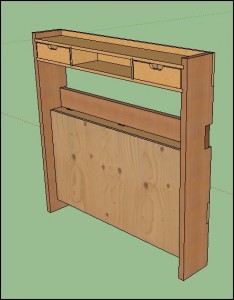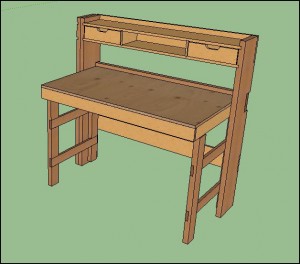Updates
We have recently confirmed our project deliverable with Mark. He expects to have a working prototype of a workbench. In addition, the patrons should be involved in the building process. We sent drawings of the workbench design (shown below) to Mark for approval and he gave some useful feedback and suggestions. We made modifications to the design based on his feedback e.g. adding leg adjustments, indicating hinge positions. The final plan (linked below) were sent to the Learning Exchange and were approved. Chris Koch, the operations manager at the Learning Exchange, informed us that we need to send them an expense claim form with the cost of the materials we will need. He also mentioned that 26-28 March would be suitable to have the build sessions with the patrons.
Initial drawings of workbench
Tasks and Dates
Material list and expense claim form: Monday 11th March
- wait for confirmation from Learning Exchange
Purchase materials ourselves: 13-15th March
Cut and drill material at UBC: 18-22 March
- book one or two sessions at a workshop on campus
Build workbench on-site with patrons: 26-28 March
- set up one or two build session(s) with Learning Exchange for patrons to drop-in and help with the building
- make arrangements for tools and transporting the materials to site
Next step
After figuring out the materials needed and submitting the expense claim form to the Learning Exchange, our team will meet up and discuss the following:
- when and where we will buy the materials
- who will go to buy and bring the materials to UBC
- when we want to do the cutting and drilling of materials on campus
- how we will get the materials to the site
- one or two days between 26-28th March to have the build session(s) at the Learning Exchange
- planning the poster and documentation assignments


